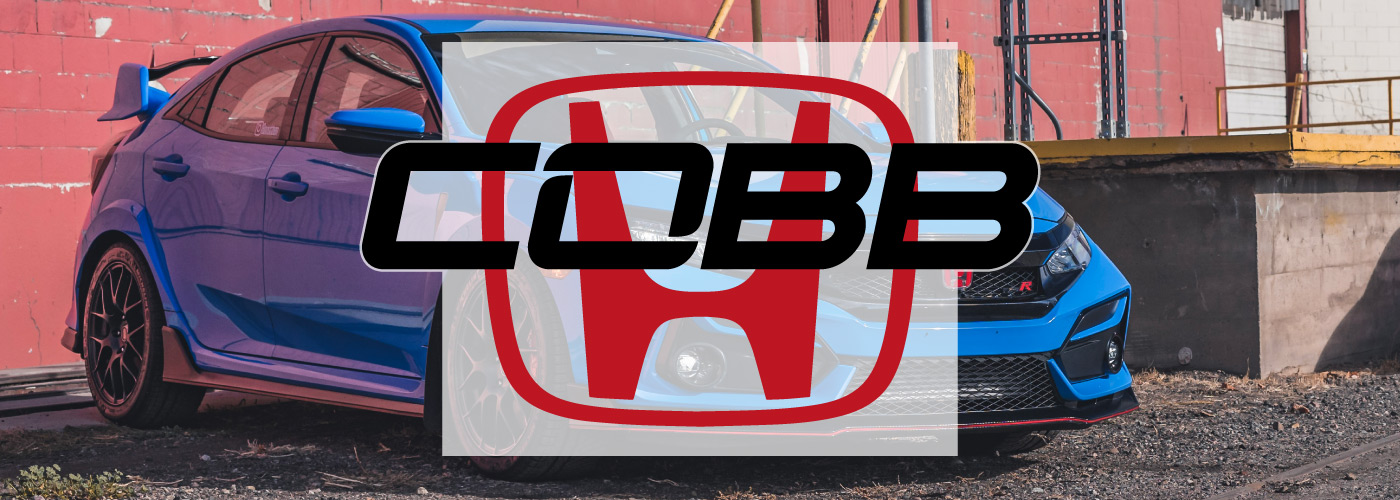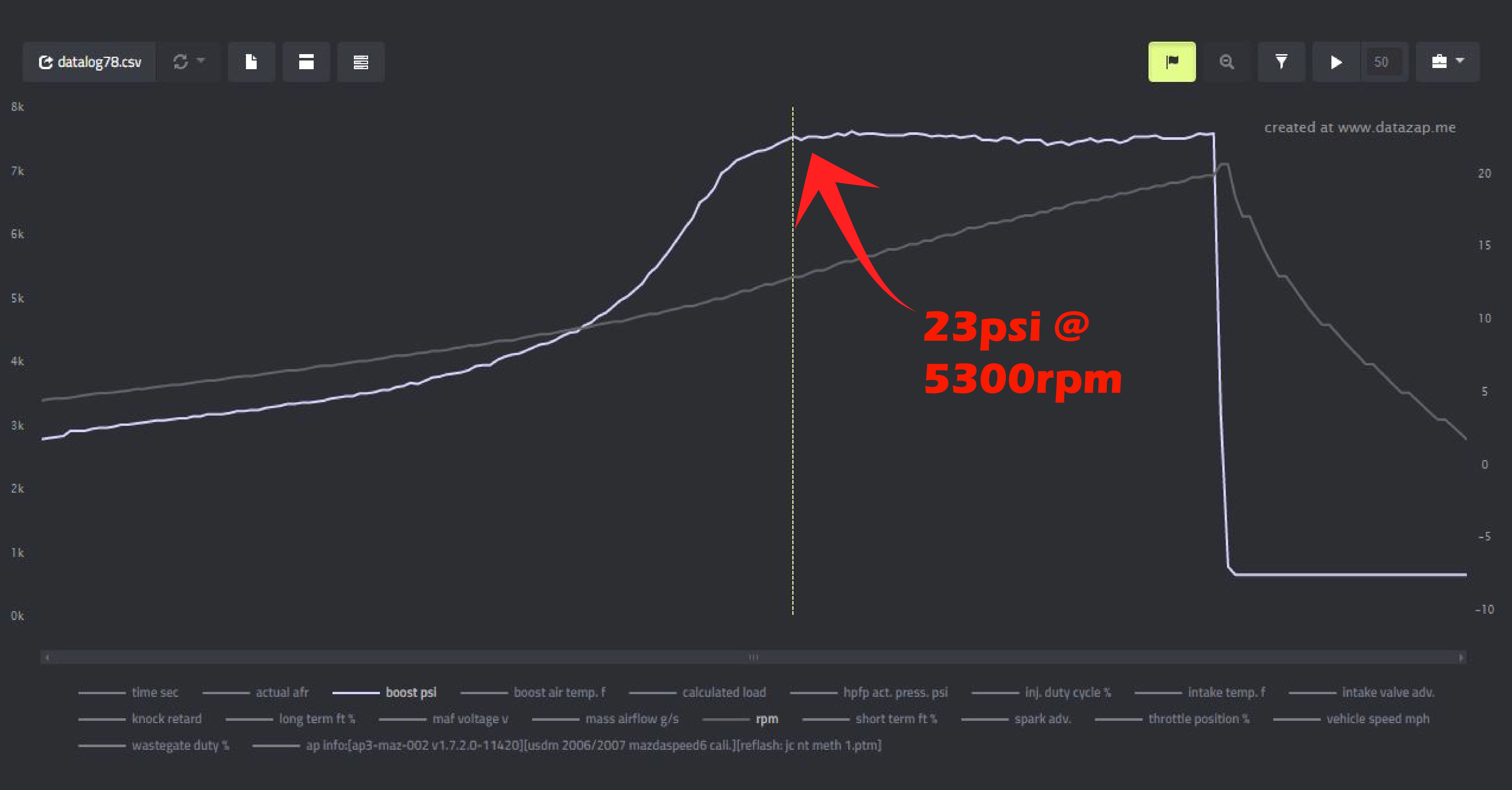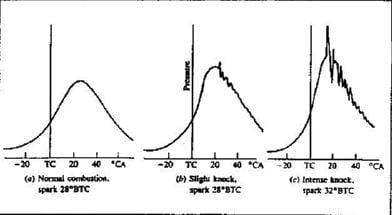
There are many ways to ruin a perfectly good engine, but today, I just want to talk about two of the most violent ones. Detonation and Pre-Ignition, often interchanged and/or used to describe the same thing, are actually quite different things that lead to similar outcomes. They are both referred to as abnormal combustion, and they are extremely bad for your engine. In order to better explain both Detonation and Pre-Ignition, I need to also explain normal combustion.
Normal Combustion:
Normal combustion is the burning of an air/fuel mixture in the combustion chamber. Normal combustion begins with the flame front originating at the spark plug and traveling outward evenly and steadily throughout the combustion chamber. It is very much like blowing up a balloon. As you blow, the balloon expands away from the source of air in a very controlled and even fashion. In a perfect world, the combustion event burns up all the air and fuel in the cylinder leaving none behind (this happens with a stoichiometric mixture of Lambda 1). The heat from the combustion event is transferred from the flame front to the piston, and from the piston to the cylinder wall, and from there into the coolant system. A common misconception about combustion is that there is an explosion involved. This simply isn’t true… Ideally, once the spark plug ignites the mixture, the flame fills the cylinder in a very quick, yet very controlled manner.
Detonation:
Definition:
Spontaneous combustion of the end-gas, or remaining air/fuel mixture in the chamber.
Detonation always comes after normal combustion has been started by the spark plug. Normal combustion expands out, but the gasses on the edge of the flame front compress and begin combusting spontaneously. This is likely caused by excess heat and pressure. The most important thing to remember about detonation though is that it occurs after the flame front has been initiated by the spark plug.
There are many factors that come together to create an ideal scenario for detonation to occur. While engine design and fuel octane plays a significant role, the most common causal factor is too much spark advance. Overly advanced ignition timing sets the burn off too soon allowing pressure to increase too quickly. This is a very high/very sharp pressure spike, and this is what often brings about engine damage.
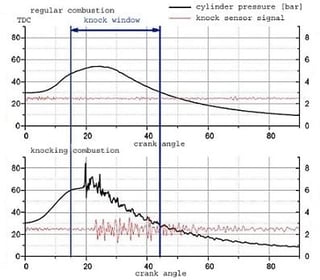 As you can see in the image, the graph on the top has a smooth pressure profile and would be considered normal combustion. However, the bottom graph shows the pressure rising normally until the detonation even occurs after the spark. Then you see the large pressure spike from the abnormal combustion. This pressure spike causes the structure of the engine to resonate as if it were a tuning fork. This resonance is what gets picked up by the knock sensor and reported to the ECU.
As you can see in the image, the graph on the top has a smooth pressure profile and would be considered normal combustion. However, the bottom graph shows the pressure rising normally until the detonation even occurs after the spark. Then you see the large pressure spike from the abnormal combustion. This pressure spike causes the structure of the engine to resonate as if it were a tuning fork. This resonance is what gets picked up by the knock sensor and reported to the ECU.
Knock sensors are a big cause for concern among many enthusiast. Being able to see what they see with a monitoring device like the Cobb Tuning AccessPort gives people a window into what is going on with their engine at all times. This window allows you to see things that you normally wouldn’t ever notice or care about. I am asked very frequently about ongoing detonation that occurs at part throttle. Fortunately, detonation is not always destructive. Low levels of detonation occur all the time and can even be sustained for long periods without effecting damage. Part throttle knock is very normal in a variety of cars and, while sometimes it can be caused by actual detonation, in most cases it is just noise as the engine resonates at certain rpms. It will also manifest itself at shift points where the engine moves significantly between gear changes at WOT, and this should not be cause for concern. However, detonation does become a big cause for concern once you start operating at higher loads. If you are seeing significant knock at Wide Open Throttle (WOT), you should contact your tuner.
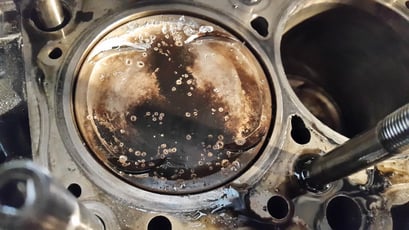 Damage:
Damage:
There are a few main failures brought on by detonation. The lesser of the points of failure is pitting or abrasion on the piston crown. You will also see this pitting on exhaust valves as well since this is the hotter side of the cylinder with the air/fuel mixture cooling the intake side. The pitting looks as if the piston was hit with bird shot from a shot gun.
Another point of damage with detonation is the ring lands. Often times under the sharp pressure spikes, you will end up with crushed or broken ring lands. In less severe cases, you will still see broken rings. This is often the case with cast pistons as they were never meant to withstand those kind of cylinder pressures, especially such sudden and violent changes in pressure.
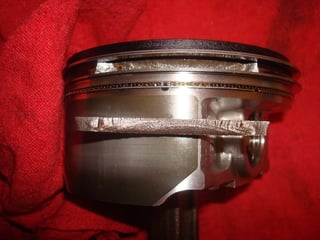 With detonation also comes heat. The pressure spikes break down the boundary layer of gas that quenches the flame front and keeps the relatively cool piston protected from the relatively hot combustion. As this boundary layer is broken down and more and more heat is absorbed into the piston, you will see deformation of the piston and cylinder wall scoring which inevitably leads to the need for a rebuilt engine. You will also see higher coolant temps because of this as well since the coolant system is having to do more work with the excess heat.
With detonation also comes heat. The pressure spikes break down the boundary layer of gas that quenches the flame front and keeps the relatively cool piston protected from the relatively hot combustion. As this boundary layer is broken down and more and more heat is absorbed into the piston, you will see deformation of the piston and cylinder wall scoring which inevitably leads to the need for a rebuilt engine. You will also see higher coolant temps because of this as well since the coolant system is having to do more work with the excess heat.
Indicators:
Higher levels of detonation are audible and will sound like quarters tapping on glass. You can’t really hear it in most new cars due to the insulated cabins, so when you do hear it, it is most likely a higher level of knock. If you have a tuning device which monitors knock retard, such as the Cobb Tuning Accesport, you are only seeing the engines response to perceived noise. It is a good idea to pay attention though as the engine, for whatever reason, is trying to save itself from something by reducing spark advance.
Pre-Ignition:
Definition:
Pre-Ignition is the ignition of the air/fuel mixture before the spark plug fires.
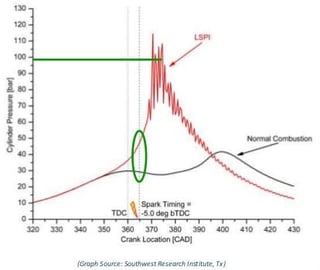 A pre-ignition combustion event looks something like this…
A pre-ignition combustion event looks something like this…
The fuel air mixture enters the combustion chamber as the piston is on its downward intake stroke. The piston then returns upward for the compression stroke. The more compressed the mixture is, the more difficult it is to ignite it, therefore, with the piston on the low side of the compression stroke, the mixture is actually easier to ignite than when it gets closer to Top Dead Center (TDC). A hot spot in the cylinder such as a glowing spark plug tip can ignite this low compression mixture very early, before the spark plug fires. Now the upward motion of the piston is fighting the combustion force that is expanding. This adds a tremendous amount of heat and load to the engine, and for this reason pre-ignition is responsible for much higher cylinder pressures than detonation. The pressure from pre-ignition is not rapid like it is with detonation. Instead, the pressure is very high and has a much longer duration.
Damage:
Damage from pre-ignition is much more severe and instantaneous than that from detonation. Typically, with pre-ignition, you will see holes melted in pistons, spark plugs melted away, and engine failure happens pretty much immediately.
Due to the longer duration of the heat and pressure bought on by pre-ignition, you will notice a lot more melted parts, whereas, with detonation, you get more parts that are just blown apart.
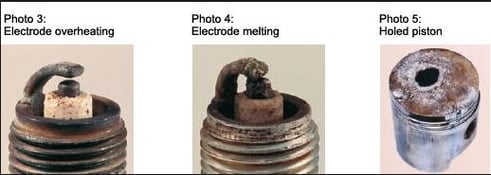
Indicators:
There are not really any early warning signs with pre-ignition. The best thing you can do to prevent it, is to make sure the engine is set up as well as it can be to minimize potential hot spots. From the OEM, cars come with appropriate spark plug heat ranges and everything setup to minimize/eliminate pre-ignition. So making sure you have the right spark plugs and the right gaps is important when doing plug swaps and adding more boost and therefore higher cylinder temps to your combustion chamber.
Topics:
